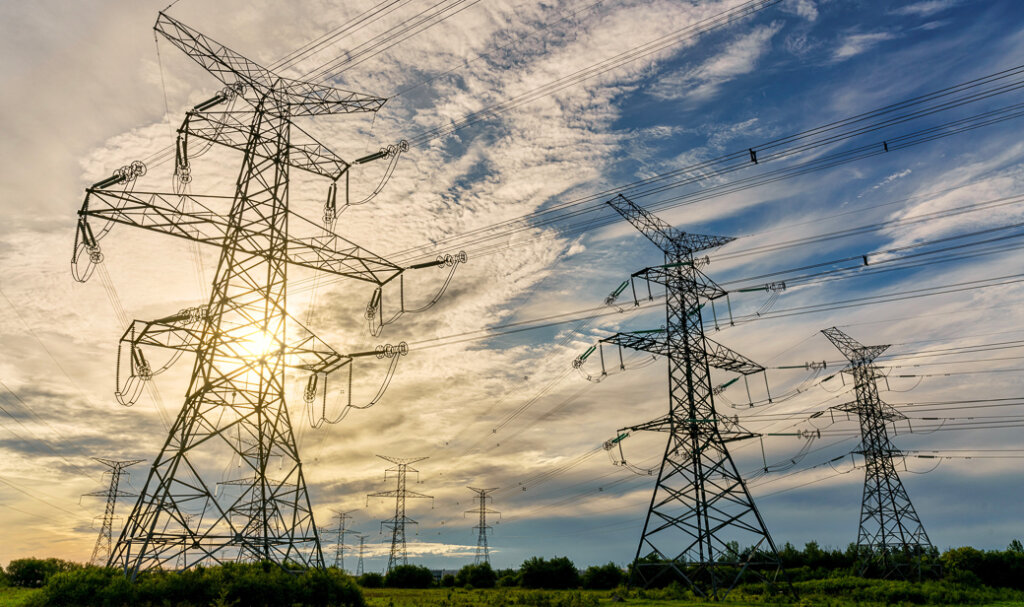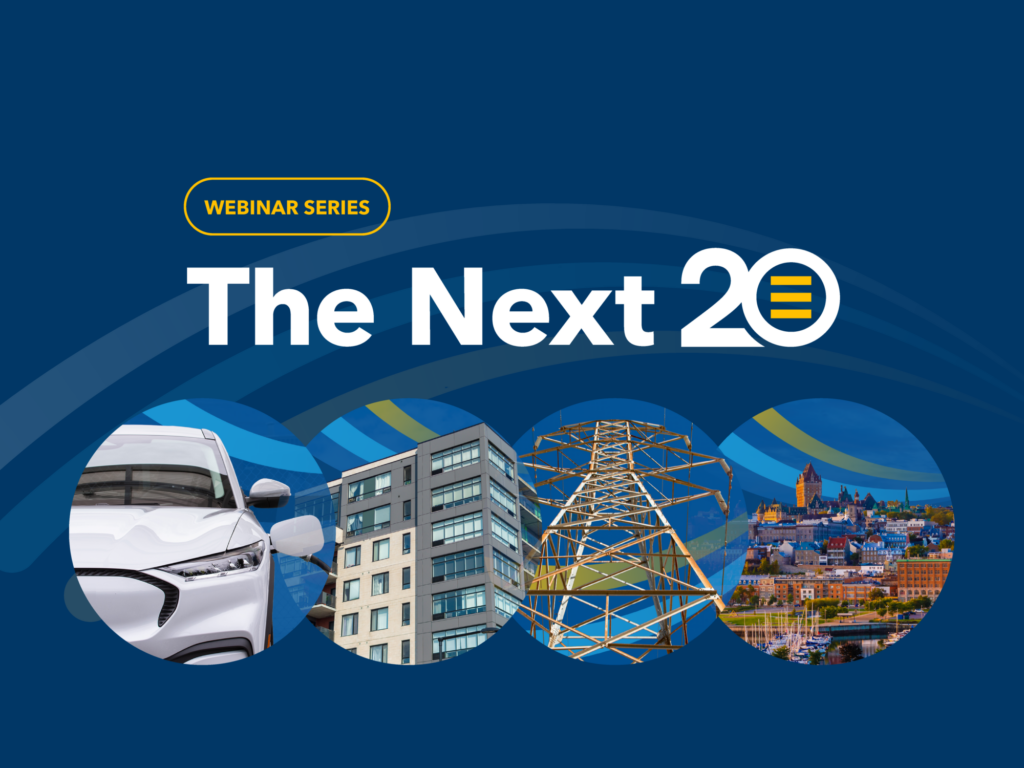Go big or go home? How utilities can win the energy transition race

“Everything, everywhere, all at once” — the U.N. Secretary-General referenced this idea when describing the urgency of addressing the climate crisis, but for utilities, it feels like their daily pace of change.
And indeed, it is. From extreme weather causing more outages, to rapidly rising power demand as the world electrifies, the challenges confronting utilities are coming from all sides.
“We’re in the midst of one of the greatest economic transformations of the modern era,” says Philippe Dunsky, founder and President of Dunsky Energy + Climate Advisors, one of North America’s leading clean energy advisory firms. “The energy transition challenges our industry like nothing we’ve known in the past half century. Incremental change just won’t cut it anymore.”
Dunsky knows this from firsthand experience. He’s been helping utilities grapple with the challenges and opportunities of the energy transition for over 30 years – since well before the term was popularized. And his team of 60 energy experts, focused exclusively on the energy transition, is intimately familiar with the multifaceted challenge of our times: decarbonizing existing assets, while harnessing demand flexibility and vastly expanding supplies of clean power. For two decades, they’ve helped utilities address these challenges across the technological, policy, regulatory and business landscapes.
Dunsky says that given the scale of change underway, only those utilities and energy providers that make bold changes today will emerge as winners 20 years from now, when the energy landscape looks vastly different. “No one wants to be on the bleeding edge,” he says. “But the goalposts have shifted on what the leading edge in this space now looks like.”
Planning: The Wide-Angle View (or why planes affect heating options)
Leaders know that before starting on a journey, it’s important to have a destination in mind. When it comes to the energy transition, that starts with a wide-angle view on how climate goals will impact all economic sectors and all energy sources, not just electricity.
Why? Because as we all know, electricity doesn’t exist in a vacuum.
Take heating. Utilities across North America face a dilemma: to meet climate goals, do we want to “electrify everything,” despite potentially costly peak demand impacts? Do we prefer instead to switch our gas from conventional sources to RNG, despite cost and supply uncertainties? Or do we aim for hybrid heating systems, letting electricity do most of the work but keeping gas to cover peak or superpeak needs?
Each option has costs and benefits, not to mention critical business model implications. But without the wide-angle view, it’s easy to miscalculate.
For example, when we look at the RNG options in a vacuum, we often assume that our cost will be the marginal cost of new plants and their associated biomass feedstocks. The problem? Airlines have their sights set on those same feedstocks (to produce carbon-neutral “SAF” fuels for their planes). Ditto for shipping. Ditto for industrials with high-temperature process demands, among others. But there’s only so much biomass to go around.
“When we take an economy-wide view, we often find that competition for biomass feedstocks will be fierce,” says Ahmed Hanafy, a partner and VP of Innovation and Growth at Dunsky. And that means that initial assumptions about RNG prices and availability for our needs can be too rosy; even wildly wrong.”
That, in turn, has big implications for demand for electricity. And so we come full circle.
Thankfully, a growing number of states and provinces have begun asking for those economy-wide viewpoints, as part of Comprehensive Climate Action Plans (CCAPs) or, in Canada, what are more commonly known as Pathways studies.
Dunsky has led those studies on both sides of the border for over a decade, usually with a view to achieving a region’s climate goals at the lowest possible cost. “By accounting for complex interactions between energy sources, they shine a light both on the solutions to prioritize and on the dead ends to avoid,” says Hanafy. “They serve as a vital starting point for the conversations that follow.”
Focused Planning: Getting Granular
With the wide-angle view clear, utilities can do proper planning, using realistic assumptions to determine least-cost pathways and likely demand for gas and electricity across heating, vehicles, industry and more.
Of course, the devil’s in the details, and the details – especially temporal and spatial – matter more now than ever.
Geographically, forecasts must be extremely detailed to meet changing customer needs. EV adoption in a given region, or neighborhood feeder area exemplifies this trend. “Where are the early adopters? Where do you need to prioritize both grid-side and EV charging infrastructure?” Dunsky asks. “Averages may have been enough 10 years ago, but today our location-specific forecasts are deemed crucial for making timely investments – in infrastructure or in non-wire alternatives – before it’s too late.”
The timing of new needs also matters. One example is the new reality of winter and summer peaks. In fact, Dunsky’s forecasts are finding that many northern utilities should expect to shift from primarily summer peaking loads, to dual summer-and-winter peaks, resulting in a fundamental shift in system and operating needs.
Thankfully, demand itself is no longer static, thanks to the explosion of distributed energy resource (DER) options.
“When I started, energy efficiency was the neglected child of power planning,” says Raegan Bond, a partner at Dunsky who herself previously oversaw a $400 million portfolio of efficiency programs as VP at Alectra Utilities. “Today, DERs are so vast that they’ve become as critical as managing supply.”
For example, a recent Dunsky study for Ontario’s Independent Electricity System Operator (IESO) looked at the potential for more than 80 different DERs. It found that DERs could realistically contribute roughly 4,000 MW to system needs within a decade, with multiples more economic potential if market rules were changed. Neglecting those opportunities is simply no longer an option.
Stepping Outside the Box
The pace and scale of change underway is daunting. And while utilities work within existing regulatory and permitting frameworks, those frameworks must evolve and change to accommodate new solutions and business models.
“The risk of not meeting increasing demand can outweigh the risk of building too much infrastructure,” says Dunsky. “Regulators need to keep their focus on risk, but they can look at both sides of the equation. Let’s ask ourselves this: What happens if we don’t move quickly enough?”
Fortune favors the bold
“One thing we’ve seen over and over in the last 20 years is people underestimating the speed of clean energy adoption and the rate at which technology and policy advance,” says Dunsky. “The energy landscape of the next 20 years will look radically different from today’s. Utilities that understand the pace and magnitude of change – and that take calculated but bold steps toward it – will be those that emerge from this transition successfully.”
By leaning into change and driving the transition forward, energy providers can come out of this transition as leaders, not as left-behinds. But that only works if they do the hard work upfront to know where they want to go, avoid dead-end detours, step outside of narrow boxes, and keep focusing on their customers’ – and society’s – evolving needs.
This article originally appeared in Utility Dive.
Related News
- Read more about Understanding Science-Based Targets initiative (SBTi) and Its Implications for Your Business
Understanding Science-Based Targets initiative (SBTi) and Its Implications for Your Business
January 28, 2025
The following article explains the Science-Based Targets initiative (SBTi) and highlights how companies can use this framework to attract investors and talent, as well as manage risk.

- Read more about Webinar Series: The Next 20 Years of the Energy Transition
Webinar Series: The Next 20 Years of the Energy Transition
January 9, 2025
As Dunsky Energy + Climate Advisors celebrates our 20th anniversary, we are excited to host The Next 20 Years of the…

- Read more about Dunsky Welcomes Clean Energy Financing and Program Expert Janice Ashworth
Dunsky Welcomes Clean Energy Financing and Program Expert Janice Ashworth
November 28, 2024
Dunsky Energy + Climate Advisors is excited to welcome Janice Ashworth to our team. With over 20 years of experience…
